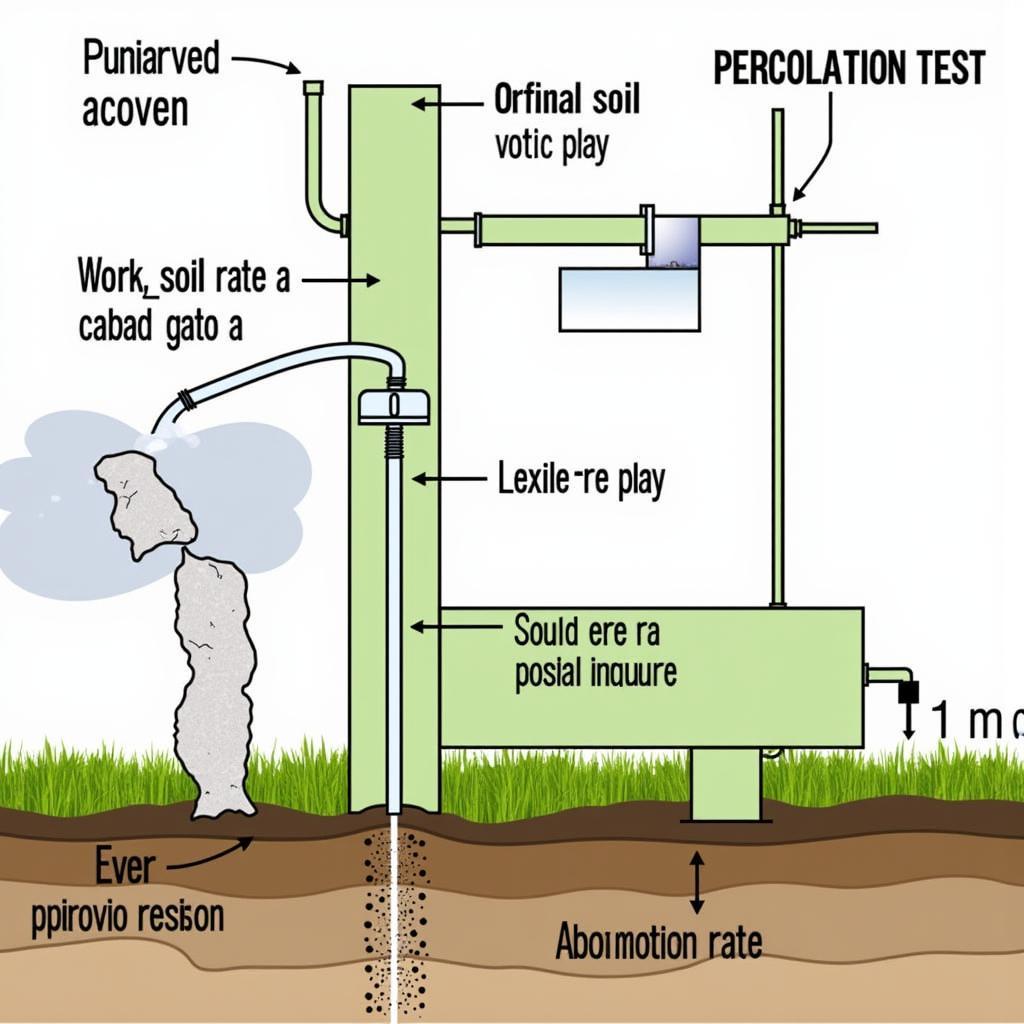Choosing the right location for your septic tank is crucial for its efficient operation and longevity. A poorly placed tank can lead to system failure, environmental contamination, and costly repairs. This guide explores the key factors to consider when deciding where to install your septic tank, ensuring a safe and effective wastewater management system.
Key Considerations for Septic Tank Placement
Several factors influence the ideal location for a septic tank. Understanding these elements will help you make an informed decision and avoid potential problems down the line.
- Distance from the House: The septic tank should be a safe distance from your home, typically at least 5 feet, to prevent potential structural damage or contamination.
- Water Sources: Maintaining a significant distance from wells, springs, and other water sources is critical to prevent contamination. Local regulations often dictate minimum distances, usually 50 to 100 feet.
- Property Lines: Respect property boundaries and maintain adequate setbacks from your neighbor’s land. Check local regulations for specific requirements.
- Soil Type and Drainage: The soil’s permeability affects the wastewater treatment process. Sandy or loamy soils are ideal for drainage, while clay soils can hinder proper absorption. A soil test is recommended to assess the suitability of your site.
- Topography: The slope of your land influences drainage patterns and can impact the placement of the drain field, which is a crucial component of the septic system. Avoid placing the tank in low-lying areas prone to flooding.
- Accessibility for Maintenance: Ensure easy access for regular inspections and pump-outs. The tank should be accessible to a vacuum truck.
- Local Regulations and Permits: Always consult your local health department and building authorities to obtain the necessary permits and comply with regulations specific to your area.
Understanding Local Regulations and Permits
Navigating local regulations and permit requirements can be complex. It’s crucial to contact your local health department or building authorities early in the planning process. They can provide specific guidelines regarding setbacks, soil testing procedures, and required permits. Failure to comply with these regulations can result in fines and delays.
Soil Suitability and Drainage
The soil plays a vital role in the effectiveness of your septic system. A percolation test, conducted by a qualified professional, determines the soil’s ability to absorb wastewater. This test helps determine the size and design of the drain field, which is the area where treated wastewater is dispersed into the soil.
 Soil Percolation Test
Soil Percolation Test
Choosing the Right Septic Tank System
The type of septic system you choose also influences the placement of the tank. Conventional systems, which rely on gravity, require careful consideration of topography. Alternative systems, such as pressurized systems, offer more flexibility in placement but may require additional components and maintenance.
Long-Term Maintenance and Accessibility
Regular maintenance is essential for the proper functioning of your septic system. Ensure easy access for pumping and inspection. Consider the location of trees and other landscaping features that may interfere with future maintenance activities.
Conclusion
Choosing the right location for your septic tank is a critical step in ensuring a safe and efficient wastewater management system. By considering the factors discussed in this guide and consulting with local professionals, you can make an informed decision that protects your property, the environment, and your investment. Remember to always comply with local regulations and prioritize long-term maintenance accessibility.
FAQs
- How often should I have my septic tank pumped?
- What are the signs of a failing septic system?
- What should I avoid putting down my drains to protect my septic system?
- How long does a septic tank typically last?
- What are the different types of septic systems available?
- Can I plant trees near my septic tank?
- How can I find a qualified septic system installer?
Need support? Contact us at Phone Number: 0372960696, Email: TRAVELCAR[email protected] or visit our address: 260 Cau Giay, Hanoi. We have a 24/7 customer service team.
For more information on Hanoi travel and transportation services, check out our articles on Hanoi airport transfers and private car hire. We offer a range of vehicles, including 16-seater, 29-seater, and 45-seater buses for all your travel needs.
